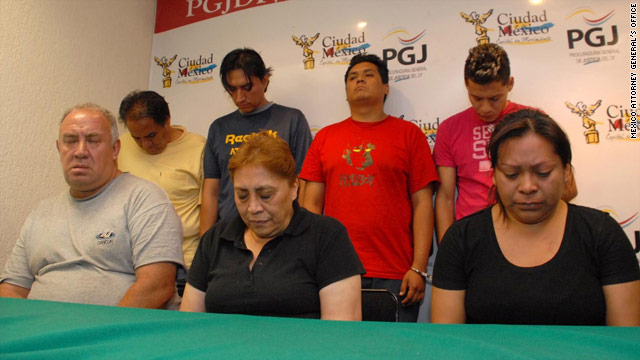By Brittney Hodnik
Impunity Watch Reporter, North America
MEXICO CITY, Mexico – The recent arrests of twelve law enforcement officers in the state of Arizona illustrates the disturbing human trafficking epidemic. Three of the officers allegedly conspired to smuggle and transport drugs and humans. This “new slavery” continues south of the border, as Mexico City police recently freed 62 victims from a forced prostitution ring – many of whom were trafficked from almost 300 miles away.

Last week, a study performed by Mexico’s Human Rights Commission showed that human trafficking numbers in Mexico City may be worse than anyone anticipated. CNN reports that in the last year, only3 convictions resulted out of a mere 40 investigations conducted for human trafficking by the police. 10,000 women are reportedly victims each year. According to Eva Reyes, investigation coordinator and a partner in the study, the issue is not so much the number of victims, but rather the lack of investigation by Mexican authorities. “The authorities are not investigating, nor are they asking witnesses,” Reyes stated.
The Human Rights Commission report indicated that because these women “are not achieving access to judicial resources . . . the large majority of these incidents remain in impunity.” As of 2003, human trafficking was not illegal in Mexico, but authorities used immigration and organized crime statutes to prosecute wrongdoers. The United States has lent minimal assistance to help curb the trafficking.
Last Monday, Mexico City police freed 62 females from forced prostitution; one of which was only 13 years old. According to Hispanically Speaking News, authorities have detained seven people – five men and two women ranging in age from 19 to 62 – for their connection to the crime.
Traffickers kidnap and coerce their victims into the human trafficking ring, often from cities far away from the capital. As reported by CNN, one victim claims two men approached her in Oaxaca and offered her a “more comfortable life,” so she went with them. Oaxaca is about 288 miles away from Mexico City which has become the hub of human trafficking in Mexico. Coercion is the most common tactic used by traffickers to recruit victims. Many traffickers go largely unnoticed because of the overwhelming population of the city – about 21 million people.
The practice continues to happen because the authorities have not made it a priority. The stigma attached to prostitution overshadows the “victim” connotation. The victims are “seen as people who are doing it freely [and] that is the first obstacle to justice,” said Reyes. The arrests in Arizona will hopefully bring attention to the atrocity of human trafficking and its prevalence in both Mexico and the United States today.
For more information, please see:
CNN International — Study Finds ‘Alarming’ Human Trafficking Figures in Mexico’s Capital — 27 May 2011
CNN Justice — Documents Detail Accusations Against Arpaio’s Employees After Sting — 27 May 2011
Hispanically Speaking News — 62 Victims of Forced Prostitution in Mexico City Rescued by Police — 26 May 2011
Wide Angle — Dying to Leave — 25 September 2003